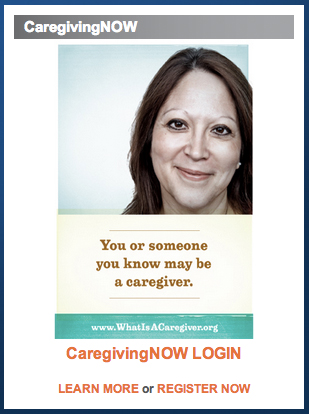By Elizabeth Costello, JSI; Project Manager, www.mahealthyagingcollaborative.org
Just as websites and online communities like the Massachusetts Healthy Aging Collaborative can provide a platform for healthy aging professionals to engage, connect, and share information, they are also useful for other groups who can benefit from peer support, such as caregivers. At the recent 2014 Aging in America conference, which was held March 11-15 in San Diego, CA, I attended a session about CaregivingNOW, an online community for caregivers in Minnesota, to learn how other states are using web-based tools to build online connections.
At the recent 2014 Aging in America conference, which was held March 11-15 in San Diego, CA, I attended a session about CaregivingNOW, an online community for caregivers in Minnesota, to learn how other states are using web-based tools to build online connections.
CaregivingNOW is a collaboration of the Amherst H. Wilder Foundation, the Greater Twin Cities United Way, and the Metropolitan Caregiver Services Collaborative in Minnesota. The online community launched in May 2013 to provide an alternative to the typical in-person caregiver support group. Presenters Kirsten Johnson of the Wilder Foundation and Tania Jones of the United Way discussed the motivations for building an online community, the community building process, and lessons learned.
The presenters emphasized that caregivers need support 24 hours a day, seven days a week. They decided to explore an online caregiver community to serve as an alternate to in-person support group while still providing invaluable peer support to caregivers and allowing them to exchange stories, practical suggestions, and emotional support.
The CaregivingNOW team embarked on an extensive community building process to explore the needs of the community, including listening sessions and a workgroup. Based on this formative research, the final product was a secure, password-protected website with a registration and approval process for all members. A login and password is required to access all content. The project team recruited “Caregiver Influencers” to lead conversations, model engagement, and create a welcoming and active online community.
In less than a year, more than 60 caregivers have joined the community. The CaregivingNOW team has learned that members post when they have an immediate need, and they may not have time to engage with the community beyond that. The presenters emphasized that building an online community takes time, and it is important to ensure that the expectations of “success” align with the needs of the caregivers. For example, even if fewer caregivers reply to a conversation topic than hoped, if the responses are in-depth and thoughtful, they are still very useful to caregivers. Thus success may hinge more on the quality of posts than the quantity.
The presenters also shared that the majority of the website members are older caregivers caring for spouses, as opposed to baby boomers taking care of parents. This audience is less likely to use other web-based technologies with the potential to offer peer support, such as Facebook and social media sites, so this online community may offer a more unique value than for other potential caregivers who are already engaged online.
The conference audience offered several topics they would want to discuss in an online caregiving community, including focusing on what a loved one can do instead of cannot do; providing assurance that the way a caregiver is feeling is normal; identifying where caregivers are in their own aging process; and using humor, such as asking what is the strangest thing you’ve ever done as a caregiver?
Learn more about CaregivingNOW
Do you work with a caregiver support group? Do you think an online community would provide the caregivers you serve with additional tools, resource, and support? Leave a comment to share your thoughts.
